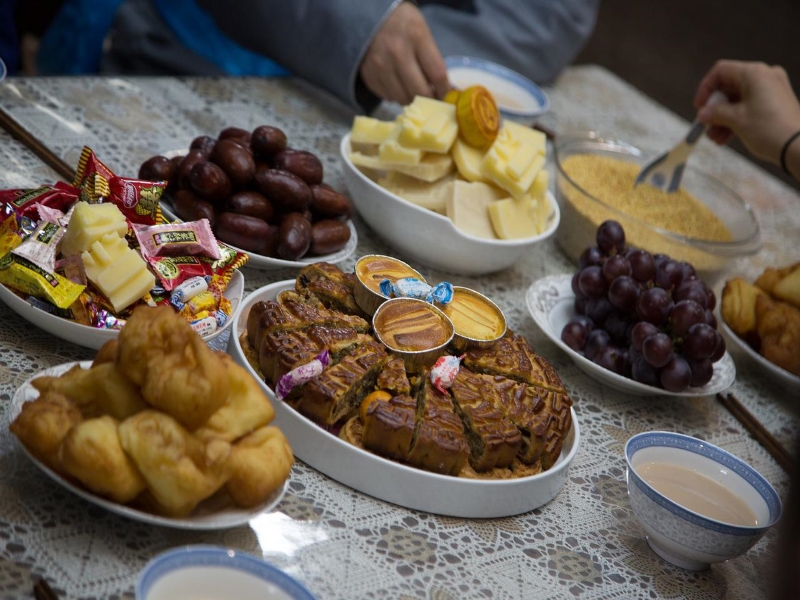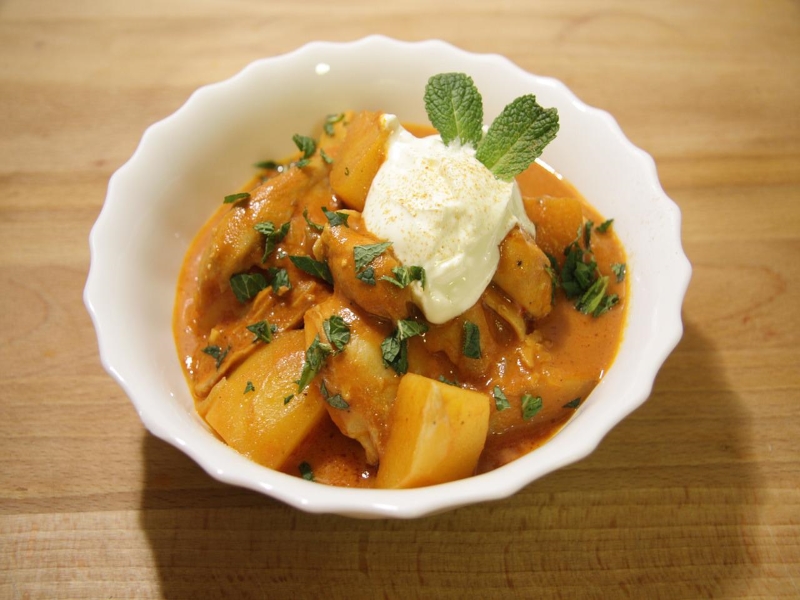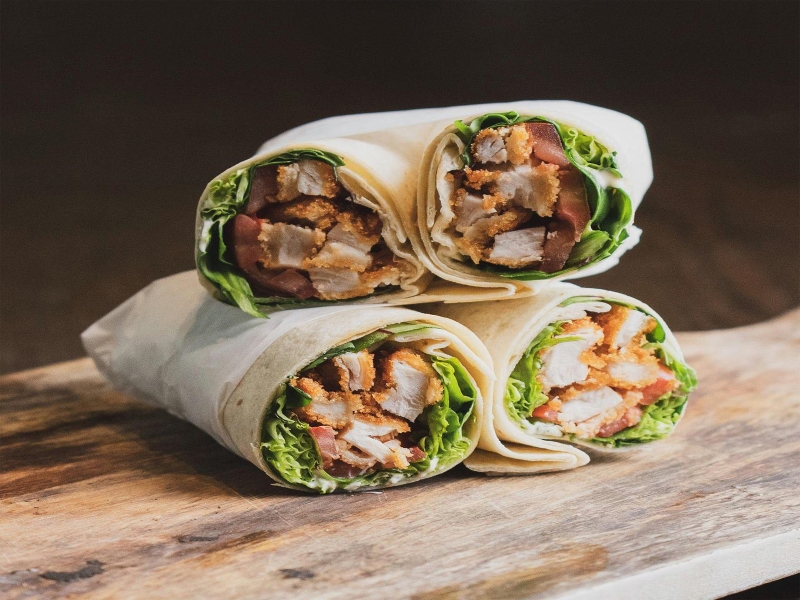Evolution of Asian Cuisine
When we think of Asian cuisine, we think of dishes that are exotic, delicious, and rich in flavors and spices.
There are various significant regional cuisines in Asia. Central Asian cuisine, East Asian cuisine, North Asian cuisine, South Asian cuisine, Southeast Asian cuisine, and West Asian cuisine are involved. A cuisine is a distinct range of cooking methods and traditions associated with a particular culture. Asia, being the world’s biggest and most populous continent, is home to a diverse range of cultures, each with its own distinct cuisine.
Rice is a staple starch in almost all Asian dietary cultures. Different types of rice are popular in different parts of the region. Laos’ culture, religious tradition, and national identity are all based on glutinous rice. Basmati rice is commonly eaten in India, jasmine rice is popular in Southeast Asia, long-grain rice is popular in China, and short-grain rice is popular in Korean and Japan. In South Asia, Southeast Asia, and East Asia, curry is a popular meal. Curry meals originated in the Indian subcontinent, paired with yogurt being used widely in Northern India, Bangladesh, and Pakistan, and coconut milk being used extensively in Southern India, Sri Lanka, and Southeast Asian cuisines.
The Asian cuisine evolution is discussed in this article. Continue reading and scroll down to learn more about Asian food.
Evolution Of Asian Cuisine

Asian Cuisine
Asian cuisine evolution did not happen by itself. It occurred due to European colonies migrating to the northeast and southwest. Some of the nations were historically part of the southeast area and were colonized by Western countries. Vietnam, Laos, and Cambodia, for instance, were under French colonies. Malaysia was under the British colony, whereas Indonesia was ruled by the Dutch colony. It all ended up enhancing the original southeast cuisine, and introducing additional components that are now part Asian cuisine.

Central Asian Cuisine
Various Central Asian countries have foods that are comparable to each other and to their borders, incorporating ingredients from Eastern Asian and Western cuisines, notably Mongolian cuisine. A meal known as “plov” or “osh” is a well-known pilaf variety. Horse meat and mutton, like beef, are the most frequent meats in many of the same nations. Mongolian food is to be responsible for this. The cuisine of Kazakhstan and Kyrgyzstan has adapted to satisfy the demands of nomads.
The Eurasian steppe’s nomads ate basic subsistence meals based mostly on dairy products. Crop distribution began in Central Asia’s mountain valleys and oasis communities as early as the third millennium BC, according to archaeobotanical records.
Central Asian culinary cultures can be classified as nomadic or urban, highland or lowland, Mongol, Turkic, or Iranian. Turkmenistan, Kazakhstan, and Kyrgyzstan have nomadic diets focused on meat and dairy products. While lamb and beef, as well as breads, baked pies, and handmade noodles, are widely available across the area, horse meat and besh barmak, a type of lamb delicacy consumed with the use of hands, are only accessible in a few places, particularly in Kyrgyzstan and Kazakhstan.
Yogurt is also said to have started in Central Asia. It is as common as kumis among Turkic peoples.

East Asian Cuisine
Chinese cuisine, Korean cuisine, Japanese cuisine, Taiwanese cuisine, Mongolian cuisine,and Tibetan cuisine are all found throughout East Asia. Provided that this is the world’s most populous region, there are several regional cuisines, particularly in China. Rice, noodles, mung beans, soybeans, seafood (Japan), mutton (Mongolia), bok choy (Chinese cabbage), and tea are among the staple foods.

North Asian Cuisine
Because all of Northern Asia is territory of the Russian Federation, North Asian food is sometimes confused with Russian cuisine. However, certain Siberian civilizations or regions, such as the Yakuts (or Sakha) and Yamal, have elaborate cuisines. Buryats have their own cuisine, which is remarkably comparable to that of their Mongolian neighbors.
Pelmeni, traditionally a Permic or Ugric delicacy, has become a popular dish in general Russian cuisine, but it can still be classified as Yamal cuisine due to its origins. They may be a modified variant of the Chinese wonton, according to some. Pelmeni is frozen outside in Siberia to keep the meat fresh during the long winter. Other forms of drying and preservation are widely popular in Yamal. Fish and cowberries, often known as lingonberries in Europe and North America, are staples in most northern Siberian cuisines. Kumis is a traditional drink among Yakuts and many other Turkic-speaking peoples.

South Asian Cuisine
Cuisines from the Indian subcontinent are included under South Asian cuisine. The dish in this area is often spicy, but it also serves to a diverse range of multi-cuisine cultures from across the world. Chili pepper, cloves, black pepper, condiments, and other spices and herbs are utilized to enhance the flavor of the food. Flavored butter and ghee are commonly used in many cultures. Curries frequently contain turmeric, coriander, and cumin.
This region’s cooking includes using sunflower, mustard, peanut, and soybean oil, which is more popular among the general public. The use of refined oil to produce pooris is well-known.
The most popular dishes are Poori Bhaji, Idli, Dosa, Dal Baati, and Litti Chokha.
Vegetables are typically served with Chapati, a type of bread that is the region’s main cuisine. Rice is traditionally served with dal in the north, and curd in the south.
Tea and coffee are broadly accessible. Tea is being offered on nearly every street corner. In a similar manner, egg dishes are also prominent.
Lamb, fish, goat, and chicken are all prevalent meats. Cattle hold a particular position in Hinduism, beef is less frequent than in Western cuisines. Beef is prohibited, as is the flesh of cows and yaks to some extent. All Muslims believe pork to be a forbidden food, and some Hindus refuse to eat it as well. In South India, Sri Lanka, and the Bengal area, fish is often eaten. Wheat and other important crops are staple foods of the Northern region.

Southeast Asian Cuisine
Southeast Asian cuisine has a main impact on simple dishes with a pleasant aroma component that includes ingredients like lime, coriander or cilantro, and basil. Ingredients in the region differ from those in East Asian cuisines, with fish sauce replacing sauce and ingredients like galangal, tamarind, and lemongrass are being used. Stir-frying, boiling, and steaming are among the cooking techniques used.
Thailand, Laos, Cambodia, Vietnam, Indonesia, Malaysia, Singapore, Brunei, and the Philippines are among the countries with Southeast Asian cuisine.
It’s no surprise that the tastes and essential ingredients of Southeast Asian cuisines are similar, yet each one has its own distinct depth of flavor.
Vietnamese food has a heavy influence on Chinese food. Basil is a widely used ingredient in Thai cooking and has its origins from Europe. Citrus flavors, on the other hand, are a significant feature of Malaysian and Indonesian cuisine.
The southeast Asian cooking menu includes tastes such as sweet, spicy, and citrus. Garlic, ginger, soy sauce and fish sauce are also prominent in many Asian dishes. Each Southeast Asian nation has its own signature cuisine with various textures and flavors.
Vietnam
Typical ingredients in Vietnamese cuisine include fish sauce, soy sauce, rice, fresh herbs, fruits, and vegetables. Lemongrass, mint, Vietnamese mint, long coriander, and Thai basil leaves are among the herbs used in Vietnamese cooking.
A famous Vietnamese dish, Banh Xeo is made of combination of crispy pork with a shrimp pancake. Fresh shrimp and tender minced pork are cooked in a wok. It’s all put inside a crispy rice and turmeric shell after it’s been fried. It’s paired with a lovely briny nuoc cham sauce for dipping. The delicious flavor combination awakens everyone’s tastebuds.
Singapore
Singaporean food is comparable to Malaysian cuisine, as a result of centuries of cultural exchange due to Singapore’s strategic location. Since the British founded Singapore in the early nineteenth century, Chinese food has prevailed alongside Malay, Indian, and English traditions.
Fish head curry is one of Singapore’s delectable and extraordinary delicacies. This meal has fish heads served with coconut cream and tomatoes, just as it sounds. Curry leaves, garlic, chile, coriander, cumin, turmeric, pepper, and tamarind are among the flavors used to make the curry. This meal is anything but simple, but definitely delicious.
Indonesia
Babur Ayam, a famous dish from Indonesia, is a thick rice porridge that is garnished with shredded chicken and a variety of delicious seasonings. Babur ayam is a traditional Indonesian morning dish with heavy Chinese influences.
Thailand
Thailand offers a plethora of delectable meals, such as Massam curry. This Thai curry is one of the sweeter and more unique variations of the meal. Like other curries, it starts with a coconut milk base before adding meat, potatoes, and curry paste. Most individuals love this type of curry.
Malaysia
Malaysian food reflects the country’s diverse heritage. Malaysia is made up of ethnic communities from Sabah and Sarawak, as well as three primary races: Malay, Chinese, and Indian. The potpourri is further enhanced by the impact of Thais from the north, Indonesians from the south, Filipinos from the east, and British, Dutch, and Portuguese colonizers over the centuries.
Laos
Because Laos shares borders with other nations, Lao cuisine has had a serious influence on the Northeastern Thailand cuisine, with certain Lao cuisine influences reaching Cambodia and Northern Thailand.
Filipino
For several decades, Filipino food has developed from its Austronesian roots to a diverse cooking with various Hispanic, American, Chinese, and other Asian influences suited to indigenous ingredients and the local taste.

West Asian Cuisine
West Asian cuisine is diverse, but also have uniformity. Olives and olive oil, honey, pitas, sesame seeds, sumac, chickpeas, dates, mint, and parsley are all typical ingredients. Kibbeh and shawarma are some of the two popular dishes.
West Asia’s favorite meats have long been mutton and lamb. Pork is banned in Islam and Judaism, hence it is hardly consumed in the region. Grilled meats, sometimes known as kebabs, are a popular meat preparation. Another type of meat dish in the country is meat and vegetable stews eaten with rice, bulgur, or bread.
Most people living in West Asia consume vegetables and pulses as their basic foods. Boiled, stewed , stuffed, grilled and cooked meat and rice are all options. Many types of cabbage, spinach, and chard are commonly eaten green leafy vegetables in the region.

Cooking Equipment
Wok
In Southeast Asian and Chinese cuisine, the wok is the most significant piece of cooking equipment. The wok’s circular bottom allows for a variety of cooking temperatures in one pan, which is definitely helpful for stir frying.
Steamer
Stainless steel or aluminum steamers with different stacking options are available, however stackable bamboo steamers are more prevalent.
Rice Cooker
As mentioned above, rice is the staple food of many Asian countries. A rice cooker is well worth the money if you consume rice daily.

Spices And Herbs
Garlic, coriander, chili peppers, cinnamon, cardamom, cumin, ginger, and anise are commonly used to give the Asian cuisine a classical flavor. Herbs such as parsley, basil, and mint, on the other hand, will provide fresh and a distinct flavor to the dishes.
